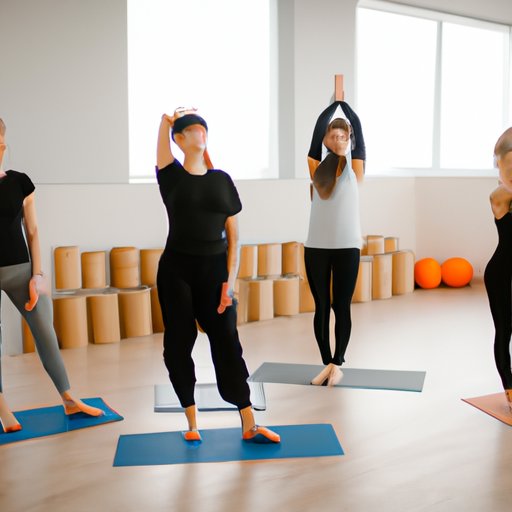Introduction
Yoga is an ancient practice that has been practiced for centuries as a way to improve physical and mental wellbeing. It involves postures, breathwork and meditation to promote a sense of peace and connection with the body. As a yoga instructor, you will be responsible for teaching others how to practice yoga safely and effectively, while also providing guidance and support.
Qualifications and Certifications Needed to Become a Yoga Instructor
In order to become a certified yoga instructor, there are certain qualifications and certifications required. Generally, you will need at least 200 hours of yoga teacher training in order to become certified. This training should include anatomy, physiology, alignment principles, teaching methodology and yogic philosophy. It is also important to have knowledge of other areas related to yoga, such as nutrition, health and wellness.
In addition to the required training, many states and countries require certification from a recognized yoga organization. Some popular organizations include the Yoga Alliance, International Yoga Federation, and American Council on Exercise. Each organization has its own set of requirements, so make sure to research which one is best for you.
Types of Classes a Yoga Instructor Might Teach
As a yoga instructor, you will have the opportunity to teach a variety of different types of yoga classes. Some of the most popular classes include Hatha, Vinyasa, Yin, Restorative, and Iyengar. Each type of class offers its own unique benefits, so it is important to understand the differences between them.
Hatha classes focus on poses that build strength and flexibility, while Vinyasa classes involve more dynamic movements and sequences. Yin yoga is great for increasing flexibility, while Restorative classes help to relax and rejuvenate the body. Iyengar classes emphasize alignment and precise movements. There are also specialized classes such as Prenatal, Kids, Senior, and Chair yoga.

Benefits of Being a Yoga Instructor
Being a yoga instructor can provide many physical and mental benefits. Not only do you get to enjoy the physical benefits of practicing yoga yourself, but you also get to share these benefits with others. You will have the satisfaction of knowing that you are helping people to feel better and live healthier lives.
In addition to the physical and mental benefits, being a yoga instructor can also offer financial rewards. Depending on where you teach, you may be able to charge a fee for your classes or offer private sessions. You may also be able to work with studios or gyms to teach classes or give workshops.

Marketing Yourself as a Yoga Instructor
Once you have completed your training and certification, it is time to start marketing yourself as a yoga instructor. Social media is a great way to spread the word about your services and connect with potential clients. You can create profiles on Instagram and Facebook, and use hashtags to reach a broader audience. Networking with other yoga instructors and wellness professionals is also a great way to get your name out there.
Advertising is another effective way to market yourself as a yoga instructor. You can create flyers and posters to distribute in local health stores and yoga studios. You can also advertise in local newspapers or radio stations. Word-of-mouth is also a powerful form of advertising, so don’t forget to ask your friends and family to spread the word.

Tips for Teaching an Effective Yoga Class
Once you start teaching yoga classes, there are some important tips to keep in mind. Preparing for class is key. Make sure to plan ahead and create a sequence that is safe and challenging for your students. Setting the atmosphere is also important. Create a calming atmosphere by playing relaxing music and lighting candles or incense.
It is essential to modify poses as needed for each student. Don’t be afraid to challenge your students, but make sure everyone is comfortable and safe. Giving clear cues is also important. Speak slowly and clearly, and use descriptive language to help your students understand the poses.
Ways to Grow Your Practice as a Yoga Instructor
As you gain experience as a yoga instructor, there are many ways to grow your practice. Continuing education is essential to stay up-to-date on the latest trends and techniques. Consider specializing in certain areas such as prenatal yoga or yoga for seniors. Teaching workshops is also a great way to expand your knowledge and share it with others.
Conclusion
Becoming a yoga instructor is a rewarding and fulfilling career path. With dedication, certifications and the right attitude, you can become a successful yoga teacher. Remember to market yourself, continue your education and specialize in certain areas to ensure success. Most importantly, enjoy teaching yoga and the positive impact it can have on your life and the lives of those around you.


